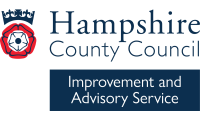Consecutive numbers
Pupils take a look at a sequence on consecutive numbers add apply different operations in between and see if they can spot any patterns in their results.
They are then to extend the problem by asking ‘what if…?’
This task offers opportunities to work together when sharing results and making decisions as to which consecutive numbers to look at next.
What Maths is involved? Mental arithmetic with all four operations, Positive and negative numbers, Recognising and describing links, Working systematically, Generalising, Visualising, Algebra skills, Mathematical reasoning and proof
Resources: There is a PowerPoint that could be useful as support. Calculators could be offered when the pupils extend their ideas
Key questions
Do you think you've found all the possibilities?
Tell me about your answers.
Do you notice anything about your answers?
Can you explain why these things always happen?
Possible extension: I have found that all the students who have been involved in this investigation have got very excited as various observations are made, patterns seen and questions asked. The most enjoyable times for me have been hearing ten year olds using their own form of algebra and coming to some powerful [for them] realisations about why every one has a 0, −2 and −4.
The problem has also been the starting point for some pupils to be able to ask "I wonder what would happen if ...?" And in this case it's been:
... we used more consecutive numbers each time?
... we had a starting point in the negative numbers?
... we took consecutive to mean going up in 2s?
... we were allowed to use fractions or decimals in between the whole numbers?
For the very able: These pupils would be encouraged to work on proofs. Then there is the useful mathematical idea of making comparisons - say between using 4 consecutive numbers and 6 consecutive numbers. They could also examine other properties of the answers for any set of 4 consecutive numbers so as to get a generalisation established.
Possible support: On the odd occasions that pupils needed support I have found that putting a number of pupils together to work as a sharing group is all that has been necessary.
